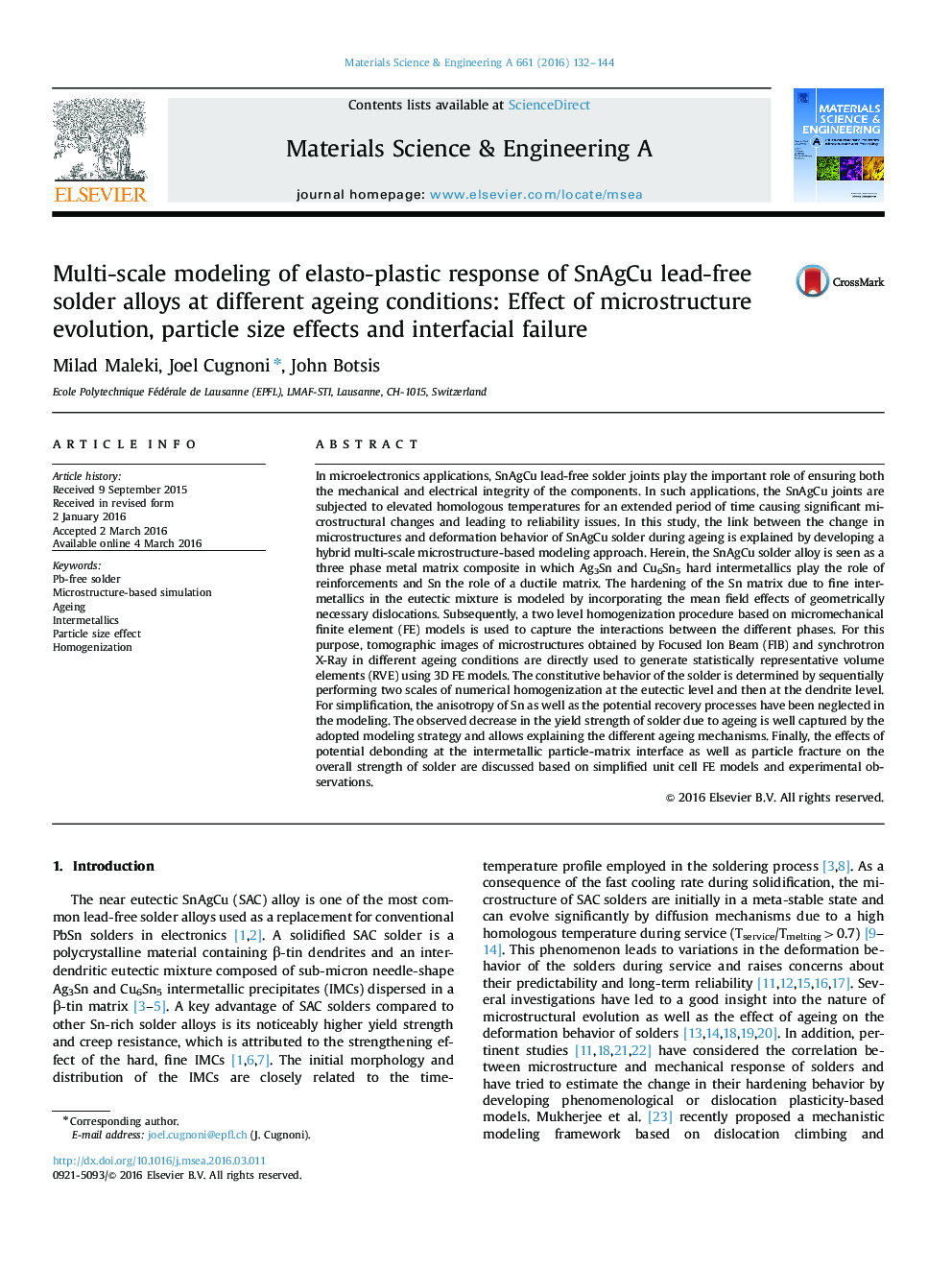| کد مقاله | کد نشریه | سال انتشار | مقاله انگلیسی | نسخه تمام متن |
|---|---|---|---|---|
| 1573511 | 1514682 | 2016 | 13 صفحه PDF | دانلود رایگان |
عنوان انگلیسی مقاله ISI
Multi-scale modeling of elasto-plastic response of SnAgCu lead-free solder alloys at different ageing conditions: Effect of microstructure evolution, particle size effects and interfacial failure
دانلود مقاله + سفارش ترجمه
دانلود مقاله ISI انگلیسی
رایگان برای ایرانیان
کلمات کلیدی
موضوعات مرتبط
مهندسی و علوم پایه
مهندسی مواد
دانش مواد (عمومی)
پیش نمایش صفحه اول مقاله

چکیده انگلیسی
In microelectronics applications, SnAgCu lead-free solder joints play the important role of ensuring both the mechanical and electrical integrity of the components. In such applications, the SnAgCu joints are subjected to elevated homologous temperatures for an extended period of time causing significant microstructural changes and leading to reliability issues. In this study, the link between the change in microstructures and deformation behavior of SnAgCu solder during ageing is explained by developing a hybrid multi-scale microstructure-based modeling approach. Herein, the SnAgCu solder alloy is seen as a three phase metal matrix composite in which Ag3Sn and Cu6Sn5 hard intermetallics play the role of reinforcements and Sn the role of a ductile matrix. The hardening of the Sn matrix due to fine intermetallics in the eutectic mixture is modeled by incorporating the mean field effects of geometrically necessary dislocations. Subsequently, a two level homogenization procedure based on micromechanical finite element (FE) models is used to capture the interactions between the different phases. For this purpose, tomographic images of microstructures obtained by Focused Ion Beam (FIB) and synchrotron X-Ray in different ageing conditions are directly used to generate statistically representative volume elements (RVE) using 3D FE models. The constitutive behavior of the solder is determined by sequentially performing two scales of numerical homogenization at the eutectic level and then at the dendrite level. For simplification, the anisotropy of Sn as well as the potential recovery processes have been neglected in the modeling. The observed decrease in the yield strength of solder due to ageing is well captured by the adopted modeling strategy and allows explaining the different ageing mechanisms. Finally, the effects of potential debonding at the intermetallic particle-matrix interface as well as particle fracture on the overall strength of solder are discussed based on simplified unit cell FE models and experimental observations.
ناشر
Database: Elsevier - ScienceDirect (ساینس دایرکت)
Journal: Materials Science and Engineering: A - Volume 661, 20 April 2016, Pages 132-144
Journal: Materials Science and Engineering: A - Volume 661, 20 April 2016, Pages 132-144
نویسندگان
Milad Maleki, Joel Cugnoni, John Botsis,